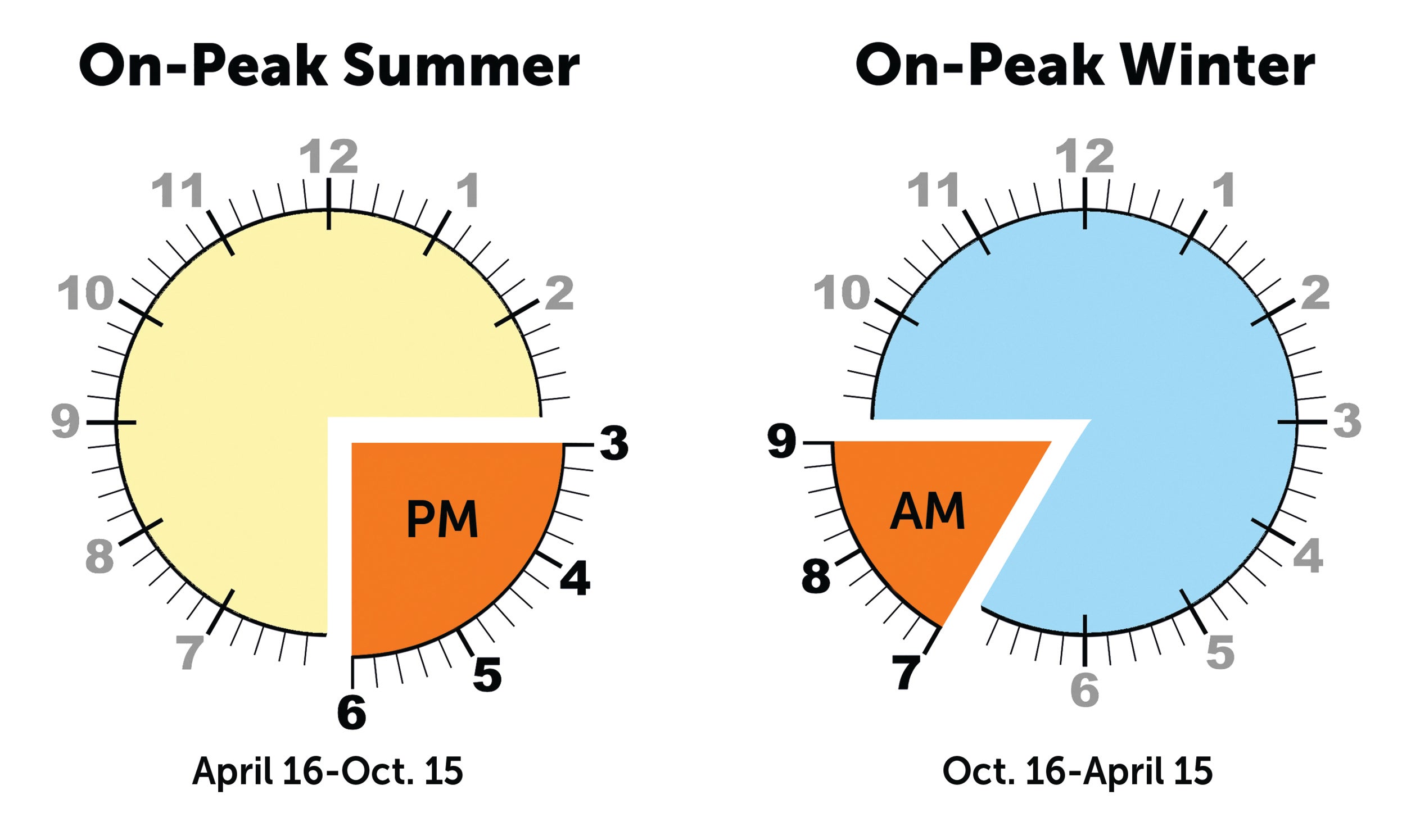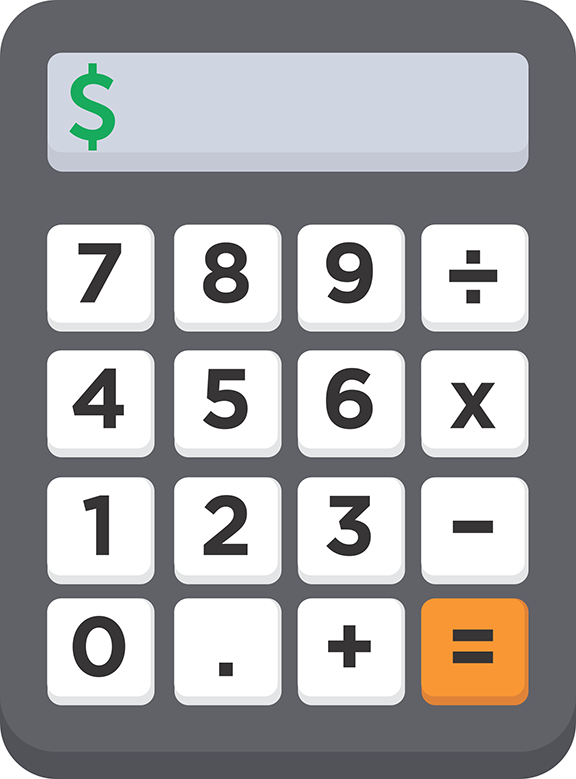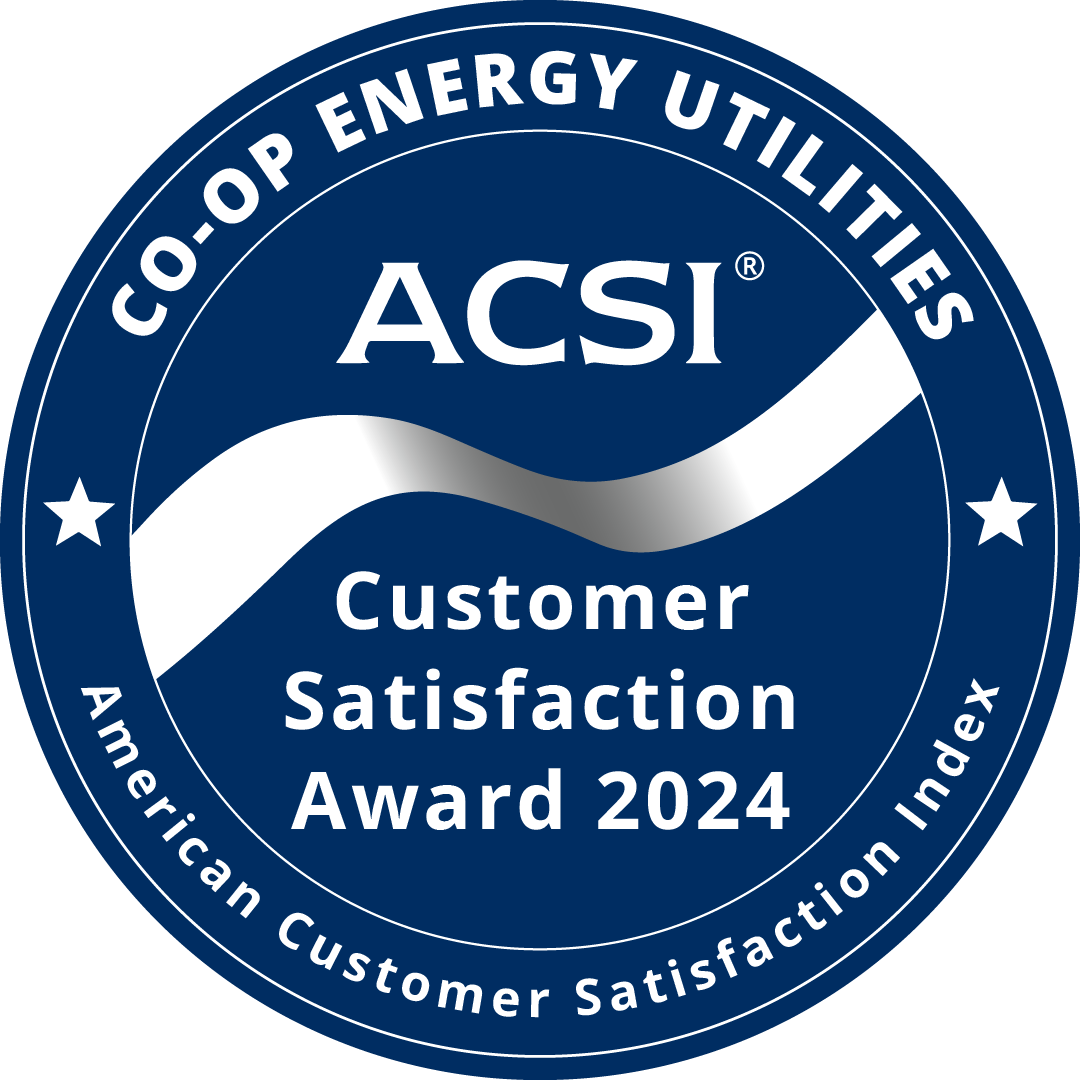
Our time-of-use (TOU) rate gives you the potential to save money by using less energy when demand for electricity is high, or during on-peak hours. Alternately, this rate plan encourages you to shift your use of electricity when demand is low, or during off-peak hours, by paying less per kilowatt hour (kWh) than our standard energy usage charge.
This billing option is not for everyone. It is ideal for those who can avoid using high wattage appliances during on-peak hours. This includes stoves, dishwashers and clothes dryers. Automating your water heater with a timer and your HVAC system with a programmable thermostat to limit how much these systems run during peak hours are also helpful if you choose this billing option.
To apply for the rate, give us a call at 252.247.3107. You are not required to sign up for the new rate; it is simply a new billing option available to CCEC members interested in reducing energy costs.
Note: The TOU rate is best suited for year-round residents whose monthly usage is at least 1,500 kWh. It is not available for members on our PrePay program or Equalizer payment plan
TOU CHARGES
On-Peak Demand Charges:
Maximum On-Peak kW $ 11.84/kW
TOU Energy Charge:
All kilowatt hours (kWhs) 4.39¢/kWh*
*Compared to our standard residential energy charges of 9.98¢/kWh June-Oct; and 9.01¢/ per kWh November-May.
Time of Use Explanation
TOU Frequently Asked Questions
Our time-of-use (TOU) rate gives you the potential to save money by using less energy when demand for electricity is high, or during on-peak hours, because the rate is significantly higher than our standard energy usage rate. Alternately, this rate plan encourages you to shift your use of electricity when demand is low, or during off-peak hours, by paying less per kWh than our standard energy usage charge.
The on-peak demand charge is $11.84 per kW. The off-peak energy charge is 4.39¢ per kWh.
On-peak times are only in effect Monday through Friday.
Off-peak times are in effect all day Saturday, Sunday and the following holidays: New Year’s Day, Good Friday, Memorial Day, Independence Day, Labor Day, Thanksgiving Day, the day after Thanksgiving and Christmas Day. When the holiday falls on Saturday, Friday will be observed as the holiday; when the holiday falls on Sunday, Monday will be observed as the holiday.
Off-peak times are in effect all day Saturday, Sunday and the following holidays: New Year’s Day, Good Friday, Memorial Day, Independence Day, Labor Day, Thanksgiving Day, the day after Thanksgiving and Christmas Day. When the holiday falls on Saturday, Friday will be observed as the holiday; when the holiday falls on Sunday, Monday will be observed as the holiday.
Often, just a few small adjustments can save you money if you are willing to stick to the plan. First, evaluate what appliances and equipment are your biggest users of electricity. In general, electric devices that heat or cool are the big users. Some of these items include water heaters, air conditioners and heaters, clothes washers and dryers, dishwashers, hot tubs and saunas and pool pumps. Next, decide if you can avoid using these electric devices during the peak periods. For devices that you only use occasionally or on a set periodic schedule, consider doing those activities on Saturday or Sunday which are always off-peak times.
Some examples of ways to shift your usage times are:
- Use the delay timer setting on your washing machine, dishwasher and other devices to use them during off-peak times. Or only use them during those periods.
- Do laundry and vacuuming on weekends.
- Install a programmable thermostat to automatically adjust temperatures for on-peak and off-peak hours.
- Do your baking and cooking on weekends or during other off-peak times. You will only use a small amount of energy to reheat the meal later.
Timers can make it easy to concentrate your electric usage during off-peak times. Plug-in appliance timers are available for a modest price from most hardware and home improvement stores. They can be used to control room air conditioners or heaters, pool pumps, and even that extra freezer that you open only occasionally.
For hard-wired devices such as a water heater, consult with an electrician or heating and plumbing contractor for installation of a timer. A timer allows the device to only come on during off-peak times. You will need to adjust the timers twice a year to accommodate the winter and summer off-peak times.
Call us and let us evaluate your usage history and discuss your electric usage patterns for your home. After we analyze your usage, we can make a recommendation. Your actual savings will be based on how committed you are to shifting your usage to the off-peak times.
Because of the higher rate for on-peak usage, there is a potential that your costs could increase. After discussing the rate plan and your usage history and patterns, and you feel you can benefit from this rate, we can sign you up. A TOU meter will be installed at your home, and the rate will take effect once the meter has been set, and we will leave a door hanger letting you know the change has been made.
You may discontinue the Time-of Use rate after 12 months and go back to the standard rate. No adjustments will be made to prior bills if you would have paid less under the standard rate.
If you choose to come off the rate before the end of 12 months, you will be charged a $20 service fee.


